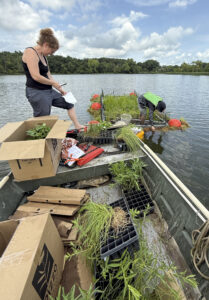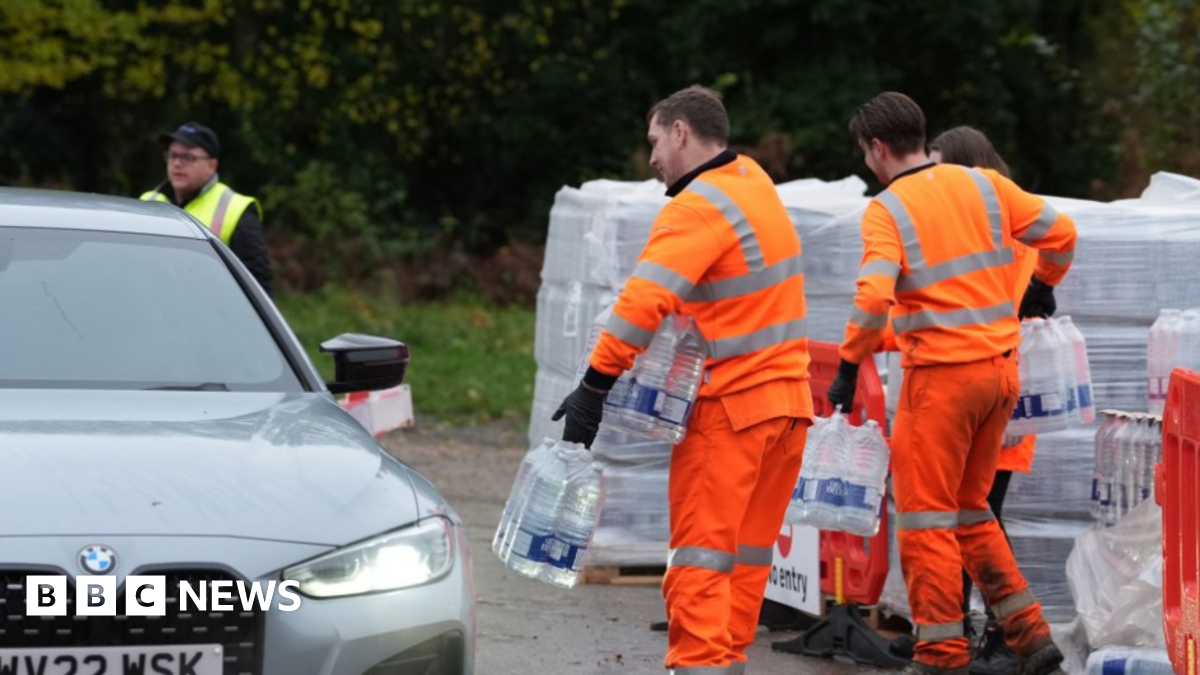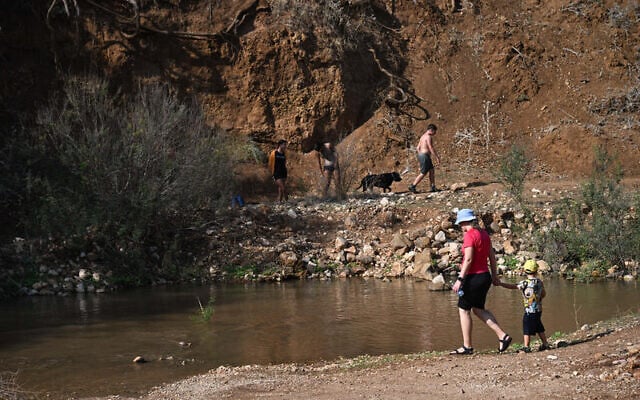K-State Leads $6 Million Project to Turn Livestock Waste Into Clean Water and Energy, Aiding Ogallala Aquifer Conservation – KCLY Radio

Project Overview and Alignment with Sustainable Development Goals (SDGs)
A four-year, $6 million research initiative led by Kansas State University is underway to develop a circular waste-recovery system for livestock operations. The project’s primary aim is to convert agricultural waste into valuable resources, directly contributing to several United Nations Sustainable Development Goals (SDGs).
- SDG 6: Clean Water and Sanitation
- SDG 12: Responsible Consumption and Production
- SDG 2: Zero Hunger
- SDG 7: Affordable and Clean Energy
- SDG 17: Partnerships for the Goals
Core Objectives and Technological Innovation
Water Scarcity and SDG 6 (Clean Water and Sanitation)
The project directly confronts water shortages in the High Plains region, a critical issue exacerbated by the depletion of the Ogallala Aquifer. By developing technology to recycle animal wastewater into clean, usable water, the initiative supports SDG Target 6.3 (improving water quality) and Target 6.4 (increasing water-use efficiency).
Circular Economy and SDG 12 (Responsible Consumption and Production)
At its core, the research promotes a circular economy model in agriculture. It aims to transform livestock waste from a liability into a source of valuable materials, aligning with SDG 12’s emphasis on reducing waste and promoting sustainable resource management through recycling and reuse.
Sustainable Agriculture and Energy: Addressing SDG 2 and SDG 7
The system is designed to recover key resources essential for sustainable development.
- Nutrient Capture: By converting waste into fertilizer, the project supports SDG Target 2.4, which calls for sustainable food production systems and resilient agricultural practices.
- Energy Generation: The initiative includes plans to generate energy from waste, contributing to SDG Target 7.2 by increasing the share of renewable energy in the regional energy mix.
Implementation Framework and Collaborative Partnerships
Project Timeline and Phased Approach
The project is structured over a four-year period to ensure robust development and practical application.
- Years 1-3: Focus on the research and development of the core waste-recovery technology.
- Year 4: Conduct a real-world field trial to validate the system’s effectiveness and scalability in an operational setting.
Multi-Stakeholder Collaboration and SDG 17 (Partnerships for the Goals)
Embodying the spirit of SDG 17, the project is a collaborative effort involving a diverse group of academic and community institutions. This partnership leverages combined expertise to address a complex regional challenge.
- Kansas State University (Lead)
- University of Nebraska–Lincoln
- Oklahoma State University
- Seward County Community College
Socio-Economic Viability and Community Impact
A dedicated team of social scientists and economists will analyze the system’s practicality and affordability for agricultural producers. This ensures the final solution is not only technologically sound but also economically accessible, promoting the long-term sustainability of local communities (SDG 11).
Anticipated Outcomes and Long-Term Impact
The project is expected to deliver significant environmental and economic benefits, enhancing the sustainability of livestock operations and protecting critical natural resources.
- Improved water security for High Plains communities through water recycling.
- Enhanced environmental protection by reducing odors and nutrient runoff from livestock facilities.
- Creation of a sustainable, circular model for agricultural waste management.
- Protection of the Ogallala Aquifer, a vital water source for the region’s agricultural economy and communities.
Analysis of Sustainable Development Goals in the Article
1. Which SDGs are addressed or connected to the issues highlighted in the article?
- SDG 6: Clean Water and Sanitation: The project’s primary goal is to address water shortages and create clean water from livestock waste, directly linking to this goal.
- SDG 2: Zero Hunger: By converting waste into fertilizer, the project supports sustainable agricultural practices, which is a key component of achieving zero hunger.
- SDG 7: Affordable and Clean Energy: The initiative aims to produce energy from livestock waste, contributing to the development of renewable energy sources.
- SDG 9: Industry, Innovation, and Infrastructure: The article describes a multi-million dollar research and development project focused on creating innovative, sustainable technology for the agricultural industry.
- SDG 12: Responsible Consumption and Production: The project promotes a circular economy model by turning waste into valuable resources, thus reducing waste and promoting the efficient use of natural resources.
2. What specific targets under those SDGs can be identified based on the article’s content?
- SDG 6: Clean Water and Sanitation
- Target 6.3: Improve water quality by reducing pollution and increasing recycling and safe reuse of water. The project directly addresses this by developing a system to “recycle animal wastewater” and “capture nutrients,” which are pollutants.
- Target 6.4: Substantially increase water-use efficiency and address water scarcity. The project’s aim to “turn livestock waste into usable resources like clean water” is a direct response to the “water shortages linked to the declining Ogallala Aquifer.”
- SDG 2: Zero Hunger
- Target 2.4: Ensure sustainable food production systems and implement resilient agricultural practices. The creation of fertilizer from waste supports more sustainable livestock operations and improves resource management, making agriculture more resilient to water scarcity.
- SDG 7: Affordable and Clean Energy
- Target 7.2: Increase substantially the share of renewable energy. The project’s goal to create “energy” from livestock waste contributes to this target by generating bioenergy, a renewable source.
- SDG 9: Industry, Innovation, and Infrastructure
- Target 9.5: Enhance scientific research and upgrade technological capabilities. The article highlights a “four-year, $6 million project” led by university researchers to develop and implement new technology, which is a direct investment in scientific research and innovation.
- SDG 12: Responsible Consumption and Production
- Target 12.2: Achieve the sustainable management and efficient use of natural resources. The project’s “circular waste-recovery system” is designed to reuse water and other materials, promoting the efficient use of the region’s “most critical water resource.”
- Target 12.5: Substantially reduce waste generation through recycling and reuse. The core concept of the project is to take “livestock waste” and turn it into usable resources, which is a form of waste reduction through recycling and reuse.
3. Are there any indicators mentioned or implied in the article that can be used to measure progress towards the identified targets?
- SDG 6: Clean Water and Sanitation
- The article implies progress can be measured by the volume of “clean water” produced by the system and the amount of “animal wastewater” that is successfully recycled. This relates to indicators measuring the proportion of wastewater safely treated and changes in water-use efficiency.
- SDG 2: Zero Hunger
- An implied indicator is the quantity of “fertilizer” produced from the livestock waste. This would measure the project’s contribution to creating resources for sustainable agriculture.
- SDG 7: Affordable and Clean Energy
- Progress could be measured by the amount of “energy” generated by the system. This would serve as an indicator of the project’s contribution to the renewable energy supply.
- SDG 9: Industry, Innovation, and Infrastructure
- The article explicitly mentions the “$6 million” project budget, which serves as an indicator of financial investment in research and development (R&D). The successful completion of the “real-world field trial” would be an indicator of technological development and implementation.
- SDG 12: Responsible Consumption and Production
- The effectiveness of the “circular waste-recovery system” can be measured by the total volume of livestock waste processed and converted into resources. This would serve as an indicator of waste reduction and recycling rates within the targeted livestock operations.
Summary of SDGs, Targets, and Indicators
| SDGs | Targets | Indicators (Implied from Article) |
|---|---|---|
| SDG 6: Clean Water and Sanitation | 6.3: Improve water quality and increase water recycling. 6.4: Increase water-use efficiency and address water scarcity. |
Volume of clean water produced; Amount of animal wastewater recycled. |
| SDG 2: Zero Hunger | 2.4: Ensure sustainable food production systems. | Quantity of fertilizer produced from waste. |
| SDG 7: Affordable and Clean Energy | 7.2: Increase the share of renewable energy. | Amount of energy generated from the waste-recovery system. |
| SDG 9: Industry, Innovation, and Infrastructure | 9.5: Enhance scientific research and innovation. | $6 million investment in R&D; Successful implementation of the field trial. |
| SDG 12: Responsible Consumption and Production | 12.2: Achieve sustainable management of natural resources. 12.5: Substantially reduce waste generation. |
Total volume of livestock waste processed and converted into resources. |
Source: kclyradio.com

What is Your Reaction?
 Like
0
Like
0
 Dislike
0
Dislike
0
 Love
0
Love
0
 Funny
0
Funny
0
 Angry
0
Angry
0
 Sad
0
Sad
0
 Wow
0
Wow
0



















































.jpg.webp?itok=0ZsAnae9#)


























